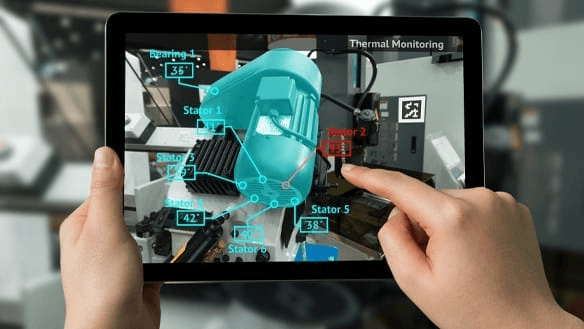Feb 25, 2025
Image sourced from Google
Augmented Reality (AR) is revolutionizing how we interact with the digital world. By seamlessly blending virtual elements with real-world environments, AR is enhancing industries from gaming to healthcare. But how does AR work? Let’s explore the core technologies and applications shaping this immersive experience.
Key Technologies Powering AR
Computer Vision
Computer vision, a branch of AI, enables AR devices to interpret and analyze real-world visuals. By recognizing objects, surfaces, and markers, AR precisely overlays digital elements onto the physical world.
Simultaneous Localization and Mapping (SLAM)
SLAM technology helps AR systems map environments and track movements in real-time. Using cameras, gyroscopes, and accelerometers, SLAM ensures accurate placement of digital content within a 3D space.
Tracking Technologies
AR systems use various tracking methods to enhance accuracy:
Marker-based tracking: Uses QR codes or predefined visuals to anchor virtual objects.
Markerless tracking: Detects real-world features without predefined markers, allowing more flexibility.
Object recognition: Identifies and interacts with specific objects for a richer AR experience.
AR Displays and Optics
AR content is projected through smartphones, tablets, smart glasses, and headsets. These devices use transparent screens, holographic displays, or projectors to merge virtual elements with reality.
How AR Experiences Are Created
Data Capture – Sensors collect real-time input from cameras, GPS, and motion sensors.
Environment Recognition – The AR system analyzes surroundings to identify objects and surfaces.
Content Generation – 3D models, animations, and digital overlays are created.
Alignment & Registration – Algorithms ensure digital elements align perfectly with real-world objects.
Rendering & Display – The final AR experience is displayed on the user’s device.
User Interaction – Users engage with AR through gestures, voice commands, or touchscreens.
Top Applications of AR
Gaming & Entertainment
Games like Pokémon Go have pioneered AR gameplay, creating immersive real-world interactions. AR is also transforming theme parks and interactive storytelling.
Education & Training
From virtual dissections in medical schools to interactive history lessons, AR enhances learning by making complex concepts visually engaging.
Healthcare & Medicine
Surgeons use AR for real-time guidance during operations, while medical students train with AR simulations to practice complex procedures safely.
Architecture & Interior Design
AR allows architects and designers to create virtual building walkthroughs, helping clients visualize spaces before construction.
Retail & E-commerce




